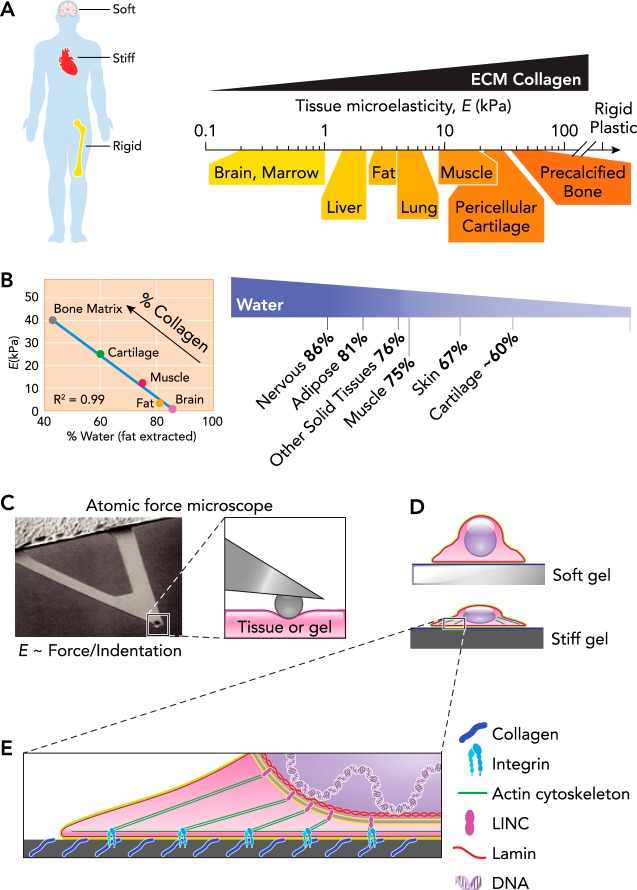FIGURE 1.
Universal scale of micro-stiffness for tissues
A: stem cells derive the tissues across that body that vary in stiffness of wide scales, from fluid like in the marrow at <1 kPa to rigid bone in the GPa range. The stiffness measured as microelasticity correlates with expression of collagen across the range of tissues but is generally much softer than the rigid plastic typically used in cell culture (21). B: hydration level of several human tissues after extraction of fat from a 46-yr-old male (26). Cartilage hydration state is age dependent and approximated for a 46-yr-old male (1). Bone matrix hydration is determined as a percentage of water and organic bone matrix (55, 56). The hydration state of tissues is inversely proportional to the tissue microelasticity (E) and collagen content. C: AFM is used to probe tissue or gel stiffness on the scale of the cell. The microelasticity is determined by measuring the restoring force relative to the indentation distance and depends on the probe tip (88). D: various cell types spread out when placed on a substrate with collagen coating of a stiff underlying gel. The spread-out cells contain a robust cytoskeleton with abundant actin stress fibers. E: collagen of the ECM provides adhesion sites for transmembrane integrins of the cell that form the basis of focal adhesions. Focal adhesions anchor the actin cytoskeleton at the membrane, whereas the LINC complex anchors the cytoskeleton at the nuclear membrane. LINC complexes also interact with the nuclear stiffness, determining lamins just inside the nuclear membrane, which provides a direct link to chromatin and DNA.

